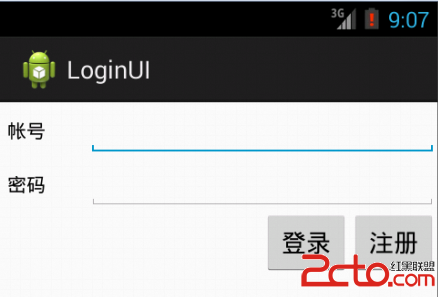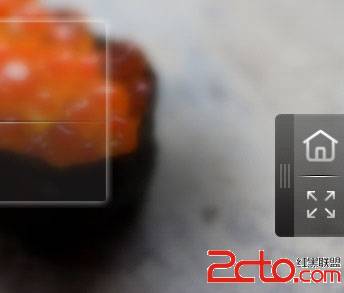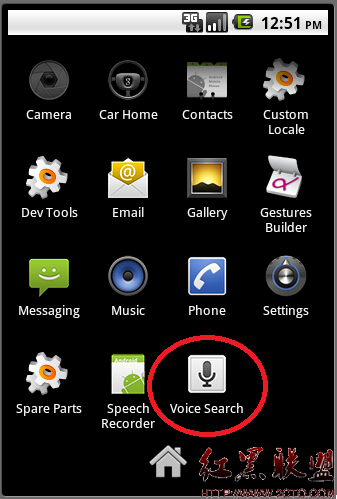Android 软键盘监听事件
Android软键盘的隐藏显示研究
Android是一个针对触摸屏专门设计的操作系统,当点击编辑框,系统自动为用户弹出软键盘,以便用户进行输入。
那么,弹出软键盘后必然会造成原有布局高度的减少,那么系统应该如何来处理布局的减少?我们能否在应用程序中进行自定义的控制?这些是本文要讨论的重点。
一、软键盘显示的原理
软件盘的本质是什么?软键盘其实是一个Dialog!
InputMethodService为我们的输入法创建了一个Dialog,并且将该Dialog的Window的某些参数(如Gravity)进行了设置,使之能够在底部或者全屏显示。当我们点击输入框时,系统对活动主窗口进行调整,从而为输入法腾出相应的空间,然后将该Dialog显示在底部,或者全屏显示。
二、活动主窗口调整
android定义了一个属性,名字为windowSoftInputMode, 用它可以让程序可以控制活动主窗口调整的方式。我们可以在AndroidManifet.xml中对Activity进行设置。如:android:windowSoftInputMode="stateUnchanged|adjustPan"
该属性可选的值有两部分,一部分为软键盘的状态控制,另一部分是活动主窗口的调整。前一部分本文不做讨论,请读者自行查阅android文档。
模式一,压缩模式
windowSoftInputMode的值如果设置为adjustResize,那么该Activity主窗口总是被调整大小以便留出软键盘的空间。
我们通过一段代码来测试一下,当我们设置了该属性后,弹出输入法时,系统做了什么。
重写Layout布局:
源码打印?
1. public class ResizeLayout extends LinearLayout{
2. private static int count = 0;
3.
4. public ResizeLayout(Context context, AttributeSet attrs) {
5. super(context, attrs);
6. }
7.
8. @Override
9. protected void onSizeChanged(int w, int h, int oldw, int oldh) {
10. super.onSizeChanged(w, h, oldw, oldh);
11.
12. Log.e("onSizeChanged " + count++, "=>onResize called! w="+w + ",h="+h+",oldw="+oldw+",oldh="+oldh);
13. }
14.
15. @Override
16. protected void onLayout(boolean changed, int l, int t, int r, int b) {
17. super.onLayout(changed, l, t, r, b);
18. Log.e("onLayout " + count++, "=>OnLayout called! l=" + l + ", t=" + t + ",r=" + r + ",b="+b);
19. }
20.
21. @Override
22. protected void onMeasure(int widthMeasureSpec, int heightMeasureSpec) {
23. super.onMeasure(widthMeasureSpec, heightMeasureSpec);
24.
25. Log.e("onMeasure " + count++, "=>onMeasure called! widthMeasureSpec=" + widthMeasureSpec + ", heightMeasureSpec=" + heightMeasureSpec);
26. }
我们的布局设置为:
源码打印?
1. <com.winuxxan.inputMethodTest.ResizeLayout
2. xmlns:android="http://schemas.android.com/apk/res/android"
3. android:id="@+id/root_layout"
4. android:layout_width="fill_parent"
5. android:layout_height="fill_parent"
6. android:orientation="vertical"
7. >
8.
9. <EditText
10. android:layout_width="fill_parent"
11. android:layout_height="wrap_content"
12. />
13.
14. <LinearLayout
15. android:id="@+id/bottom_layout"
16. android:layout_width="fill_parent"
17. android:layout_height="fill_parent"
18. android:orientation="vertical"
19. android:gravity="bottom">s
20.
21. <TextView
22. android:layout_width="fill_parent"
23. android:layout_height="wrap_content"
24. android:text="@string/hello"
25. android:background="#77777777"
26. />
27. </LinearLayout>
28. </com.winuxxan.inputMethodTest.ResizeLayout>
AndroidManifest.xml的Activity设置属性:android:windowSoftInputMode = "adjustResize"
运行程序,点击文本框,查看调试信息:
E/onMeasure 6(7960): =>onMeasure called! widthMeasureSpec=1073742144, heightMeasureSpec = 1073742024
E/onMeasure 7(7960): =>onMeasure called! widthMeasureSpec=1073742144, heightMeasureSpec = 1073742025
E/onSizeChanged 8(7960): =>onSizeChanged called! w=320,h=201,oldw=320,oldh=377
E/onLayout 9(7960): =>OnLayout called! l=0, t=0,r=320,b=201
从调试结果我们可以看出,当我们点击文本框后,根布局调用了onMeasure,onSizeChanged和onLayout。
实际上,当设置为adjustResize后,软键盘弹出时,要对主窗口布局重新进行measure和layout,而在layout时,发现窗口的大小发生的变化,因此调用了onSizeChanged。
&n
补充:移动开发 , Android ,




